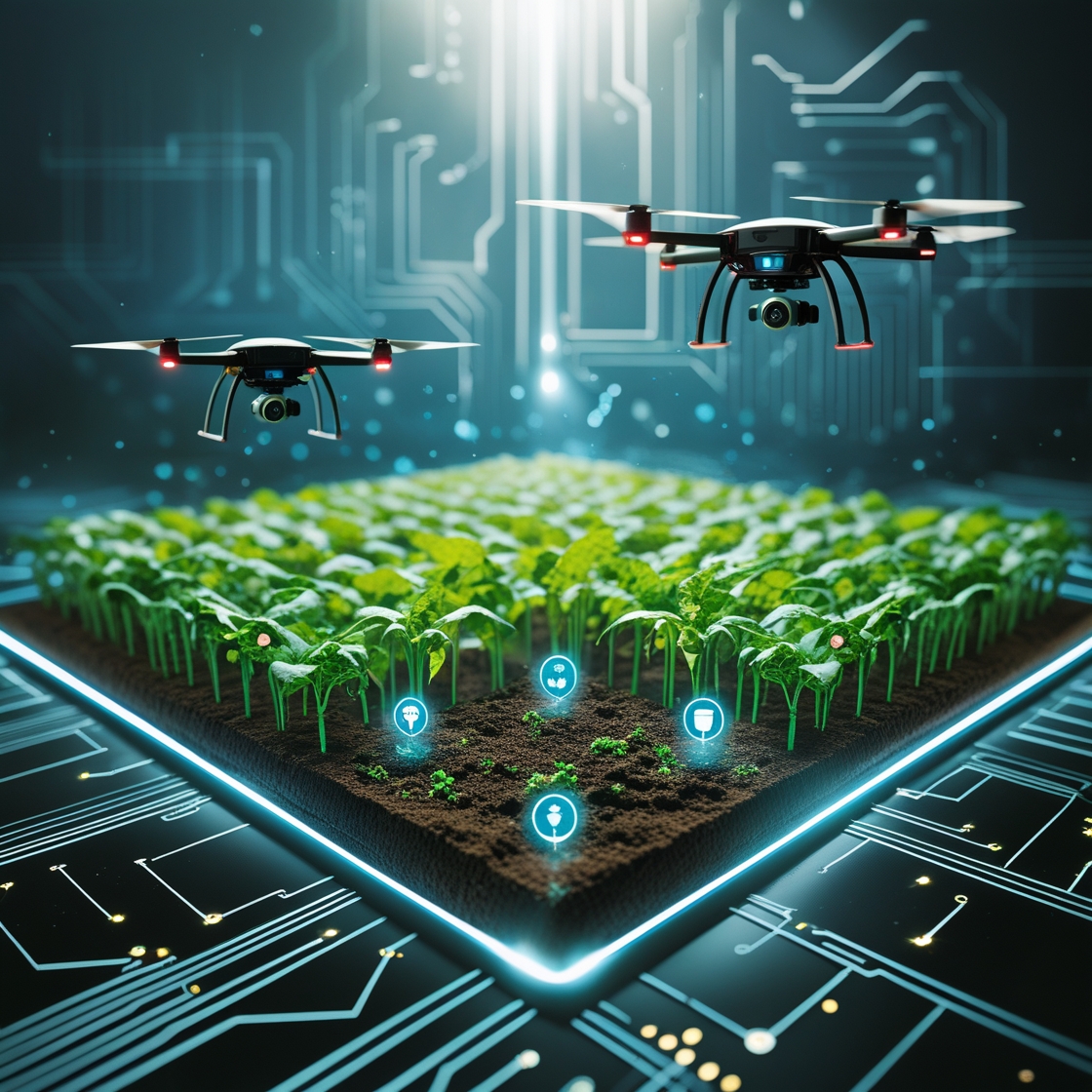Precision Agriculture: How Technology is Making Farming More Efficient and Sustainable
BRT PhD student and junior researcher Adam Hruška recently wrote a think piece about how emerging technologies are shaping the future of farming through the lens of precision agriculture. Enjoy reading!
Agriculture has come a long way from its roots of manual labor. With the growth of the world’s population and the ongoing effects of climate change, it faces new challenges. In turn, farmers are looking for technological approaches to increase efficiency, maximize yields, and promote sustainability of the industry. This paradigm, known as precision agriculture, implements tools like drones, artificial intelligence (AI), and soil sensors to optimize farming practices. But can a purely technological approach truly make farming more sustainable? Let’s explore how these innovations are transforming modern agriculture.
The core of precision agriculture revolves around the change of knowledge levels within the perspective on farms. There are various tools that allow farmers to gain knowledge about their field without enforcing homogeneity. One being unmanned aerial vehicles, otherwise known as drones. Drones are revolutionizing precision farming by providing farmers with real-time insights without the need to enter fields themselves. Equipped with high-resolution cameras and infrared sensors, drones can map fields, monitor crop health, and detect problems like pest infestations or nutrient deficiencies, even in localized parts of the fields. This allows farmers to identify stressed areas and take targeted actions, such as adjusting irrigation or creating maps for precise pesticide and fertilizer application. By reducing the overuse of water, pesticides, and fertilizers, drone technology helps lower costs while reducing the environmental impacts of such applications.
AI is another game-changer in modern agriculture, especially coupled with the aforementioned drones. Machine learning algorithms analyze vast amounts of data from weather forecasts, soil conditions, pictures of fields and satellite imagery to provide farmers with actionable insights. These predictive models help in planning planting schedules, optimizing resource allocation, and preventing crop diseases. One of the most promising AI applications is automated weed detection. AI-powered cameras can identify pest and weed infestation in real time, enabling farmers to apply pesticides only where needed rather than spraying entire fields indiscriminately. Such targeted approaches have strong potential for major reduction of chemical use and prevents unnecessary harm to the surrounding environment.
Soil is the core element of farming and thus soil sensors play a vital role in monitoring its health in form of moisture levels, nutrient content, and pH balance. Widely used sensors provide real-time data, allowing farmers to irrigate and fertilize crops with precision. For instance, a greenhouse equipped with soil sensors can determine the exact amount of water needed for different areas, preventing both over-irrigation and drought stress. Such applications excel in controlled environments such as hydroponic production and greenhouses, yet the potential implementation to fields remains possible. Additionally, by using only the necessary number of fertilizers, farmers can prevent nutrient runoff into water bodies, reducing pollution and maintaining soil fertility.
However, challenges remain in the widespread adoption and effective use of precision agriculture tools such as drones, AI, and soil sensors. One of the primary barriers is the cost associated with adopting these new technologies. For small-scale farmers, the initial investment required to purchase and maintain advanced equipment can be prohibitive. This financial hurdle often limits access to the benefits of precision agriculture, creating a disparity between larger, well-funded operations and smaller, resource-constrained farms.
Moreover, there is an ongoing lack of suitable sensors tailored to the specific needs of diverse agricultural environments. While some advancements have been made, the availability of sensors that can accurately and reliably monitor various soil and crop conditions across different climates and terrains remains a challenge. This gap in technology can hinder the effectiveness of precision agriculture practices, as farmers may not have access to the precise data needed to make informed decisions.
Another critical issue is the digital literacy gap among farmers. The successful implementation of precision agriculture tools requires a certain level of technical proficiency. Farmers must be able to operate complex machinery, interpret data, and utilize software platforms effectively. In many rural communities, there is a lack of training and educational resources to support the development of these skills, leading to not utilizing the available technologies.
Additionally, reliable internet connectivity is essential for many of the precision agriculture tools, yet rural areas often lack adequate infrastructure. Without consistent and high-speed internet access, farmers may struggle to upload and analyze data in real-time, compromising the timeliness and accuracy of their decision-making processes. This infrastructure gap further strengthens the challenges faced by farmers in fully adopting precision agriculture tools.
Overall, precision agriculture represents a significant shift in how we approach farming. Drones, AI, and soil sensors are already making agriculture more efficient, cost-effective, and environmentally friendly. While there are hurdles to overcome, the potential benefits far outweigh the challenges. With further developments in technology, farmers can improve yields while conserving resources, paving the way for a more sustainable future in agriculture.
For more details on BRT activities, subscribe to our newsletter or follow us on social media for regular updates and highlights.


